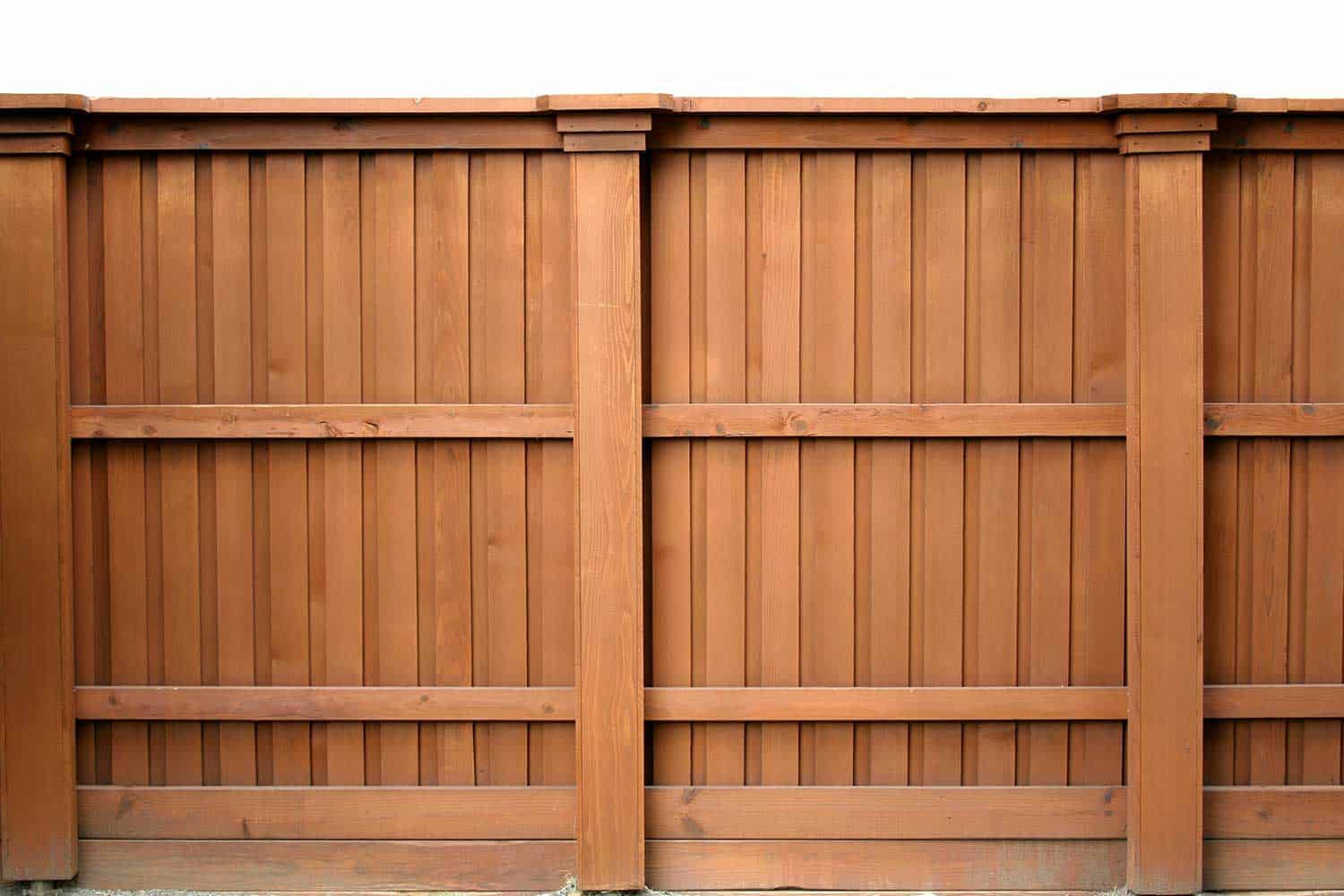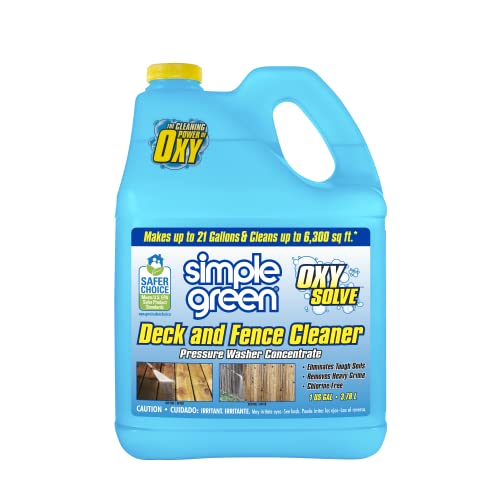The attractiveness and durability of cedar make it a popular choice for outdoor fencing. Like all wood exposed to the elements, cedar can be vulnerable to weathering and decay. If you have a cedar fence, you may be wondering whether it needs to be sealed or otherwise treated to maintain its beauty and strength. We've researched this question, and we have the answer for you.
To keep your cedar fence looking its best, clean it annually and apply a high-quality sealer every 3-5 years. Inspect your fence regularly for weathering and decay and make minor repairs as needed. Cut back vines and shrubs that grow against the fence, and protect it from excess moisture by angling your lawn sprinkler away from it.
Proper maintenance of your cedar fence can keep it looking great and add years to its life. Keep reading for more details about how to clean and seal your fence, what products are best to use, and how long your fence can last if you take great care of it!

How to Seal A Cedar Fence?

Sealing your cedar fence maintains its vibrant color and protects the wood from weathering (warping, cracking, splintering, or graying due to exposure to the sun, rain, and wind). Sealing also reduces or eliminates decay by preventing moisture from seeping into the wood. You'll get great results by following this three-step process:
Step 1: Inspect Your Fence
Before you begin your sealing project, take a walk around your fence, inspecting it for signs of damage such as cracking, splintering, or mildewing. Replace any broken or warped boards. Remove weeds or vines growing against the fence and cut back bushes or other landscaping, so plants do not contact the wood.
Unsightly blue-black discoloration around the nailheads indicates the presence of galvanized (iron) nails, which react chemically with the tannins in cedar. It would be best if you removed them to replace them with stainless steel nails. You can clean the blue-black stains from the wood by sanding off any previous coats of sealer and then scrubbing the stains with a solution of oxalic acid. Use a nylon-bristle brush: metal brushes can damage the wood and leave traces of iron that will react with the tannins and cause more staining.
Click here to view Oxalic Acid (rust remover) on Amazon.
Step 2: Wash Your Fence
After you complete the inspection, it's time to give your fence a thorough cleaning. You can either use a power washer to get the job done quickly or clean the fence by hand, which takes longer but is safer for the wood.
Using A Power Washer On Your Fence
If you choose the faster, more convenient route of using a power washer, be sure to protect yourself, your (and your neighbors') property, and the fence itself. The water stream from even a small power washer packs a serious punch! Wear gloves, safety glasses, and sturdy shoes. Move any breakable objects away from the area where you will be operating the washer. If your fence borders neighbors' properties, ensure that the water stream won't damage any of their belongings or plants.
Cedar is a softwood that can easily be damaged during power washing: a high-pressure stream can cause splintering, and holding the stream in one place for too long can etch the wood. To safely clean your cedar fence, choose a power-washer nozzle with a 25-degree angled tip, and employ a water pressure of no more than 1,500 - 2,000 psi (pounds per square inch). Follow a few helpful tips to avoid damaging your fence:
- Stand at least 18 inches from the fence and spray in broad sweeps.
- Always follow the wood's grain as you sweep. If your fence boards are vertical, sweep the spray from top to bottom; if the boards are horizontal, sweep from left to right.
- Keep the tip of the nozzle horizontal as you spray, and keep moving steadily, so the spray doesn't etch the wood.
The wood's gray surface layer will slough off, and the reddish, natural cedar tone of the fresh wood underneath will appear. After you have cleaned the entire fence, let it dry for at least 24 hours before sealing it.
Click here to view the popular SunJoe SPX3001 power washer on Amazon.
Washing Your Fence By Hand
You may prefer to take a more hands-on approach and clean your fence manually. Although washing the fence by hand is more labor-intensive and tedious than power-washing, it is gentler on the wood and allows you to thoroughly clean any cracks or other imperfections, which will ultimately help the sealer adhere better.
Protect yourself from the caustic chemicals involved by wearing rubber gloves and safety glasses. Mix three quarts of warm water with one quart of oxygen bleach and 1/4 cup of dish soap. Using a garden sprayer, saturate a section of the fence with this solution. Let it sit for ten minutes, but not long enough for the solution to dry. Then, using a nylon-bristle deck brush, gently scrub the fence, going with the wood's grain.
Rinse it with clear water from your garden hose. If any tough stains or mildew spots remain after rinsing, saturate them again with the oxygen bleach solution and scrub them with a stiff nylon-bristle brush. After you have washed and rinsed the entire fence, allow 24 hours' drying time before sealing it.
Click here for oxygen bleach on Amazon.
Click here to see a deck brush on Amazon.
Step 3: Seal Your Fence
After completing Steps 1 and 2 above, you are ready to apply the sealer. Sealing your cedar fence will help it withstand the constant battering it receives from nature, including rain, heat, cold, sunlight, and insects. It is generally best to apply sealer in the late spring or early fall when the temperatures are moderate and the sun's UV rays are not too harsh.
Select a clear sealer specifically designed for cedar, like the one below:
Click here to see Cedar-Seal on Amazon.
Apply two thin coats of the sealer to your fence, giving it time to dry completely between the first and second coats. Pay special attention to any cracks or other imperfections in the wood, ensuring that the sealer penetrates them fully to keep moisture and dirt from working their way in and worsening the damage.
How Often Does A Cedar Fence Need To Be Sealed?
You should inspect, repair, and wash your cedar fence annually and re-seal it every 3-5 years. During each inspection, be alert for signs of weathering and decay, and let the condition of your fence guide your decision about when is the right time to re-seal it. If your fence is regularly exposed to harsh weather conditions -- the burning summer sun of Texas, for example, or the intermittent freezing and thawing of a New England winter -- it will likely require re-sealing more frequently than a fence in a sheltered location or a milder climate.
How Long Does A Cedar Fence Last?
A typical cedar fence lasts about 15-20 years. Factors such as location, exposure to the elements, and quality of maintenance can have a major impact-- positive or negative -- on the lifespan of your fence. For example, a cedar fence that is not sealed will experience weathering and decay at a much faster rate than a sealed fence. On the other hand, if you maintain your fence carefully and take simple steps like angling your lawn sprinklers away from it, you may extend its lifespan to 25 or even 30 years.
Does Staining A Cedar Fence Make It Last Longer?
To get the longest life out of your cedar fence, consider staining it. Remember, the two major causes of deterioration in cedar fences are weathering and decay: a high-quality stain-and-sealer can address both of those issues. In determining whether to stain or not, you must weigh the value of added longevity against the loss of the cedar's natural appearance.
If you decide to stain, select an oil-based product: porous cedar absorbs them well, resulting in a smooth and attractive finish. Semitransparent stains are best at blocking UV rays from the sun, thus reducing weathering and fading. In general, the darker the stain you choose, the more effectively it will protect your fence from UV rays.
Finally, choose a stain with a built-in sealer (most deck and fence stains have this feature) to protect against moisture and decay. Follow the steps outlined above: inspect your fence, wash it, allow it 24 hours to dry, and then apply two thin coats of the stain/sealer, giving the first coat plenty of time to dry before applying the second.
Click here for premium stain-and-sealer on Amazon.
In Conclusion
Whether you choose to stain and seal or simply apply a clear coat sealer, properly maintaining your cedar fence will keep it vibrant and functional for many years to come!
For more great tips on making your outdoor space beautiful, check out some of our other articles:






